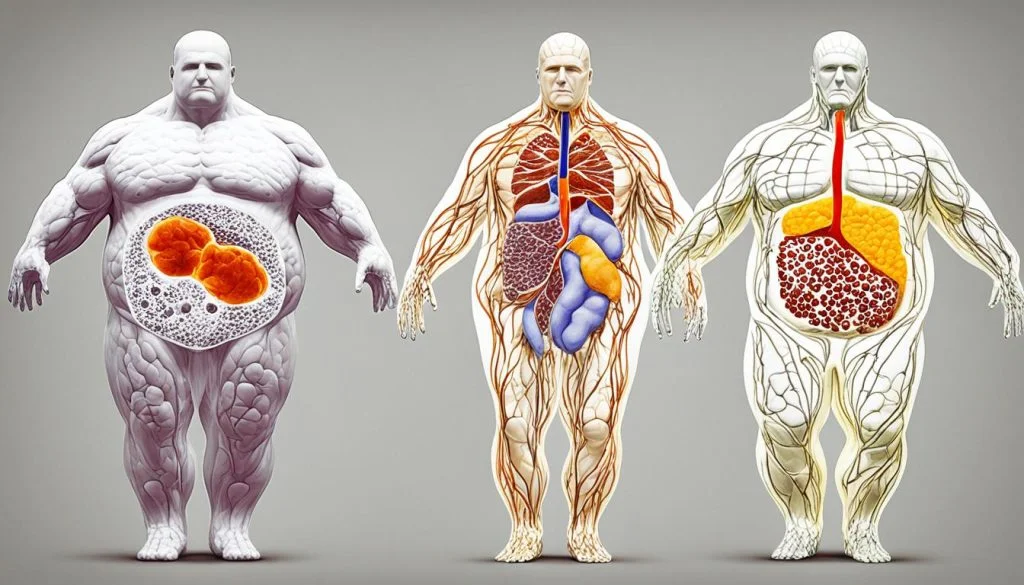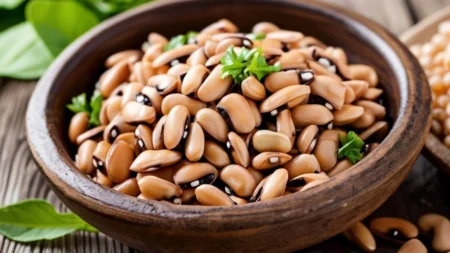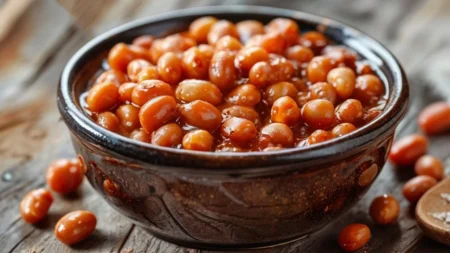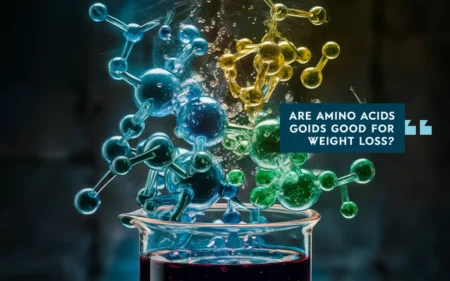Adipose tissue is more than fat. It’s an organ that helps keep our energy in balance. We have two main types: brown and white adipose tissue. They work very differently1.
Brown adipose tissue helps keep us warm and burn energy. It’s packed with mitochondria and a special protein called UCP1 that turns food into heat. On the other hand, white adipose tissue stores energy. It saves extra calories as fat1. These differences matter a lot. They play a big role in how our body uses energy and how disorders like obesity and diabetes might develop1.

Key Takeaways
- Brown adipose tissue (BAT) is specialized for thermogenesis and energy expenditure, while white adipose tissue (WAT) is the primary site of energy storage.
- BAT is rich in mitochondria and expresses the uncoupling protein 1 (UCP1), which dissipates chemical energy as heat.
- Activation of BAT and the induction of beige adipocytes within WAT can increase whole-body energy expenditure, offering potential therapeutic interventions for obesity and type 2 diabetes.
- Understanding the distinct metabolic phenotypes of BAT and WAT is crucial for developing strategies to combat metabolic disorders.
- Improved living standards have contributed to the increased prevalence of obesity and overweight individuals.
Distinct Characteristics of Brown and White Adipose Tissues
The main difference between brown and white adipose tissues is their structure and function2. Brown adipose tissue (BAT) has lots of mitochondria. It also has UCP1, a protein that produces heat instead of energy as fat3. This means BAT helps burn energy to keep us warm and in balance4. White adipose tissue (WAT), on the other hand, is where our body stores energy. It is filled with large fat cells3.
Thermogenic Capacity of Brown Adipose Tissue
BAT’s ability to produce heat is what makes it unique3. It’s key for mammals to create their own warmth. This heat production prevents energy from turning into fats, unlike WAT’s nature of storing energy as fat2. Making BAT work harder burns more energy in the body. This can help fight obesity and other metabolic issues4.
White Adipose Tissue and Energy Storage
Unlike BAT, WAT doesn’t make heat3. It is the main storage for energy in our bodies. Plus, it helps control how much we eat and our metabolism3. Think of WAT as a savings account for extra energy. It can be used later, although it cannot produce heat like BAT3. Some white fat cells can turn into beige ones, acting a bit like BAT. This helps with managing energy use3.
The tasks BAT and WAT have are vital for our energy balance and overall health3. Knowing how they work is key in fighting obesity and related issues423.
Metabolic phenotypes of brown vs white adipose tissue
Brown and white fat tissues have very different metabolic roles. This affects how our bodies use energy and maintain health5. Brown fat can burn a lot of energy and help keep our body weight and blood sugar in check6. On the flip side, white fat mostly stores energy. Too much white fat can lead to obesity and related health problems, like type 2 diabetes5. Knowing about these differences is key to fighting metabolic diseases.
Studies show that brown fat is vital for our body’s flexibility and how well we burn food for energy5. It helps keep our blood sugar steady and makes us sensitive to insulin, an important hormone. When brown fat is active, it can fight obesity by using special fat hormones7. But if white fat grows too much, it can cause obesity and health issues. So, it’s important to understand the jobs of both fat types.
| Characteristic | Brown Adipose Tissue | White Adipose Tissue |
|---|---|---|
| Primary Function | Thermogenesis and energy expenditure | Energy storage |
| Cellular Morphology | Multilocular with high mitochondrial content | Unilocular with low mitochondrial content |
| Metabolic Rate | High | Low |
| Role in Obesity and Diabetes | Increased activity can help prevent and manage obesity and type 2 diabetes | Expansion can lead to obesity and associated metabolic disorders |
Scientists are also looking into how obesity, body functions, and nerves are linked5. They study how fat cells react to signals from the nervous system5. Focus is shifting towards figuring out how these cells make and use energy, which could be a key in treating obesity5. And this all stresses the need to understand the unique ways brown and white fat work.
“Brown adipose tissue plays a crucial role in tissue plasticity and human metabolism.”5
Summing up, the functions of brown and white fat are crucial for our health. Knowing what each type does can help develop better ways to tackle obesity and its health dangers. This insight guides researchers and doctors in fighting obesity and metabolic diseases.
Conclusion
Brown and white adipose tissues work differently in our bodies. Brown fat burns calories to produce heat. White fat stores energy. Understanding these differences is crucial for managing our weight and health8.
By activating brown fat and turning some white into beige fat, we could burn more energy. This approach might help fight obesity and type 2 diabetes. To make progress, more research is needed on how these fats interact8.
Brown fat is quite common in adults and has links to age and health. It plays a role in keeping our energy use and heat stable. These findings suggest that targeting brown fat might aid in fighting obesity and diabetes9. The unique features of brown and white fat show the potential for novel medical treatments10.
FAQ
What are the key differences between brown and white adipose tissues?
Brown adipose tissue (BAT) helps generate heat, packed with mitochondria and has UCP1. This protein lets it turn energy into heat. On the other hand, white adipose tissue (WAT) mainly stores energy. It has large, fat-filled cells.
What is the role of brown adipose tissue in energy metabolism?
BAT is key in keeping our body’s heat and energy in check. With lots of mitochondria and UCP1, it burns energy. This helps control weight, maintain sugar levels, and balance energy.
How do white adipose tissue and brown adipose tissue differ in their metabolic functions?
White adipose tissue stores energy and can cause obesity and diabetes if it gets too big. In contrast, brown adipose tissue burns energy for creating heat. This quality might help treat obesity and metabolic issues.
Can brown-like adipocytes be induced within white adipose tissue?
Yes, white adipose tissue can produce BAT-like beige fat cells. This can help with energy metabolism regulation.
Why is understanding the distinct metabolic phenotypes of brown and white adipose tissues crucial?
It’s vital for fighting metabolic diseases like obesity and diabetes. Knowing how these tissues work is crucial for our overall metabolic health. It affects how we balance energy.
Source Links
- https://www.mdpi.com/1422-0067/23/14/7641 – Factors Associated with White Fat Browning: New Regulators of Lipid Metabolism
- https://www.ncbi.nlm.nih.gov/pmc/articles/PMC3989735/ – Brown and white adipose tissues: intrinsic differences in gene expression and response to cold exposure in mice
- https://www.umassmed.edu/guertinlab/research/adipocytes/ – Adipocytes
- https://www.ncbi.nlm.nih.gov/pmc/articles/PMC3661118/ – Brown adipose tissue: Recent insights into development, metabolic function and therapeutic potential
- https://www.ncbi.nlm.nih.gov/pmc/articles/PMC9874101/ – An update on brown adipose tissue and obesity intervention: Function, regulation and therapeutic implications
- https://www.sciencedirect.com/topics/medicine-and-dentistry/brown-adipose-tissue – Brown Adipose Tissue – an overview
- https://www.nature.com/articles/s41467-021-22272-3 – Brown and beige adipose tissue regulate systemic metabolism through a metabolite interorgan signaling axis – Nature Communications
- https://www.ncbi.nlm.nih.gov/pmc/articles/PMC9978510/ – An insight into brown/beige adipose tissue whitening, a metabolic complication of obesity with the multifactorial origin
- https://academic.oup.com/edrv/article/34/3/413/2354645 – Brown Adipose Tissue in Adult Humans: A Metabolic Renaissance
- https://nutritionandmetabolism.biomedcentral.com/articles/10.1186/s12986-022-00694-0 – Browning of the white adipose tissue regulation: new insights into nutritional and metabolic relevance in health and diseases – Nutrition & Metabolism










